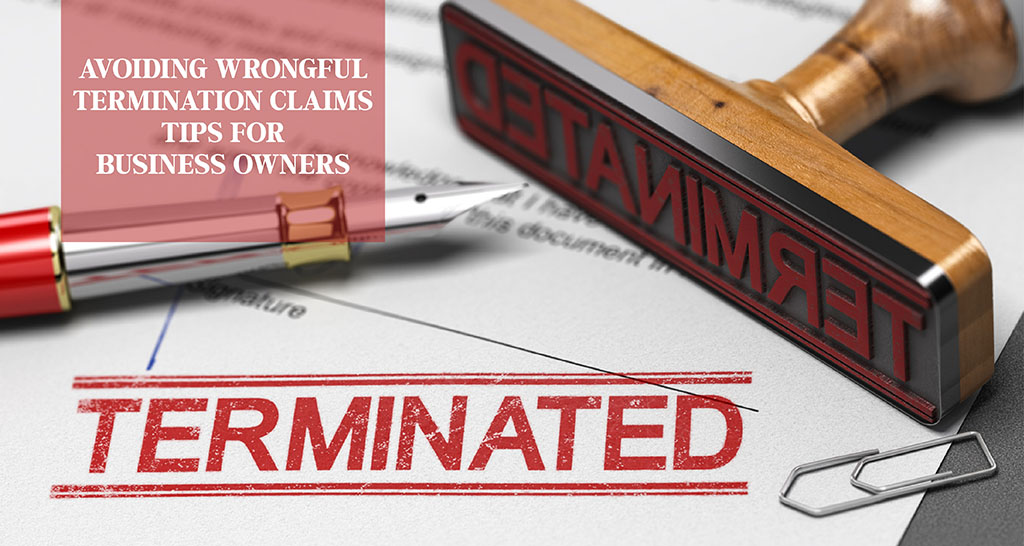In business, employers face a myriad of challenges, and navigating the complexities of employee termination is undoubtedly one of them. Wrongful termination claims can be not only legally intricate but also damaging to a company’s reputation and workplace morale.
As a business owner, understanding the nuances of employment termination and implementing preventive measures is crucial. In this guide, we’ll delve into essential tips aimed at helping business owners avoid wrongful termination claims, and fostering a fair and legally sound employment environment.
1. Clear and Consistent Policies:
Establishing and maintaining clear and consistent employment policies is fundamental to creating a fair and legally sound workplace. Articulate expectations for performance, behavior, and conduct in documented policies that are easily accessible to all employees.
Regularly review and update these policies to ensure they align with evolving business needs and comply with changing legal requirements. Consistency in the application of policies across all employees is crucial, as it not only fosters a culture of fairness but also minimizes the risk of claims based on perceived discrimination or bias. By investing in a transparent and comprehensive policy framework, businesses create a foundation for employee understanding and adherence.
2. Thorough Documentation:
Meticulous documentation serves as a robust defense against wrongful termination claims by providing a detailed and factual account of an employee’s journey within the company. Keep thorough records of employee performance evaluations, disciplinary actions, and instances of policy violations. This documentation should be organized, easily retrievable, and consistently updated.
In the event of termination, a transparent trail of documentation can substantiate the reasons for the decision, showcase adherence to established procedures, and ultimately bolster the company’s position in the face of legal challenges. Comprehensive documentation not only protects the company but also demonstrates a commitment to fairness and procedural integrity.
3. Legal Counsel and Human Resources Involvement:
Integrating legal counsel and human resources professionals into the termination process enhances the company’s ability to navigate legal complexities while ensuring fairness and consistency. Legal professionals from reputable law firms like Fishman Larsen Callister can offer guidance on compliance with employment laws, review termination decisions for legal soundness, and provide strategic advice.
Human resources professionals play a crucial role in ensuring that the termination process aligns with company policies, procedures, and cultural values. The collaborative involvement of legal and HR experts contributes to a well-rounded and legally defensible termination process that prioritizes fairness, compliance, and professionalism.
4. Legal Compliance:
Remaining vigilant about legal compliance is a continuous commitment for business owners. Regularly audit and update termination processes to ensure alignment with federal, state, and local employment laws. This includes staying informed about at-will employment doctrines, anti-discrimination laws, and any industry-specific regulations. Collaborating with legal professionals for periodic reviews of termination practices ensures that the company’s actions adhere to the current legal landscape. Proactive legal compliance not only mitigates the risk of wrongful termination claims but also contributes to a workplace culture built on trust and adherence to ethical standards.
5. Consistent Performance Reviews:
Regular and consistent performance reviews are a proactive approach to managing employee performance and preventing issues that could lead to termination. Schedule regular evaluations that provide constructive feedback, identify areas for improvement, and recognize achievements. Timely feedback allows employees to address performance concerns before they escalate to termination levels, fostering a culture of continuous improvement. The documented record of performance reviews not only serves as a basis for termination decisions but also highlights the company’s commitment to helping employees succeed and grow within the organization.
6. Transparent Communication:
Transparent communication is a cornerstone of a healthy employer-employee relationship, particularly when considering termination. Communicate expectations, offer constructive feedback during performance reviews, and provide employees with opportunities for improvement. In cases where termination becomes necessary, ensure that the reasons are communicated with clarity, compassion, and empathy. Transparent communication not only reduces the likelihood of misunderstandings that could lead to legal claims but also demonstrates the company’s commitment to treating employees with respect and fairness throughout their tenure.
7. Consider Alternative Dispute Resolution:
Incorporating alternative dispute resolution mechanisms into employment contracts reflects a commitment to resolving conflicts through non-adversarial means. Consider options such as mediation or arbitration, providing alternative avenues for dispute resolution outside the courtroom. These mechanisms can be included in employment contracts and offer a more efficient and collaborative way to address disputes.
By providing alternatives to traditional litigation, businesses not only showcase a commitment to fairness and resolution but also potentially reduce the financial and reputational impact of wrongful termination claims. Alternative dispute resolution mechanisms demonstrate a willingness to address concerns through constructive dialogue, fostering a workplace culture that values conflict resolution and collaboration.
Conclusion
In business ownership, safeguarding against wrongful termination claims is not just a legal imperative but a strategic move to cultivate a positive workplace culture. By adopting the tips outlined in this guide, business owners can proactively mitigate the risk of wrongful termination claims, fortifying their organizations with practices that prioritize fairness, adherence to employment laws, and transparent communication.

